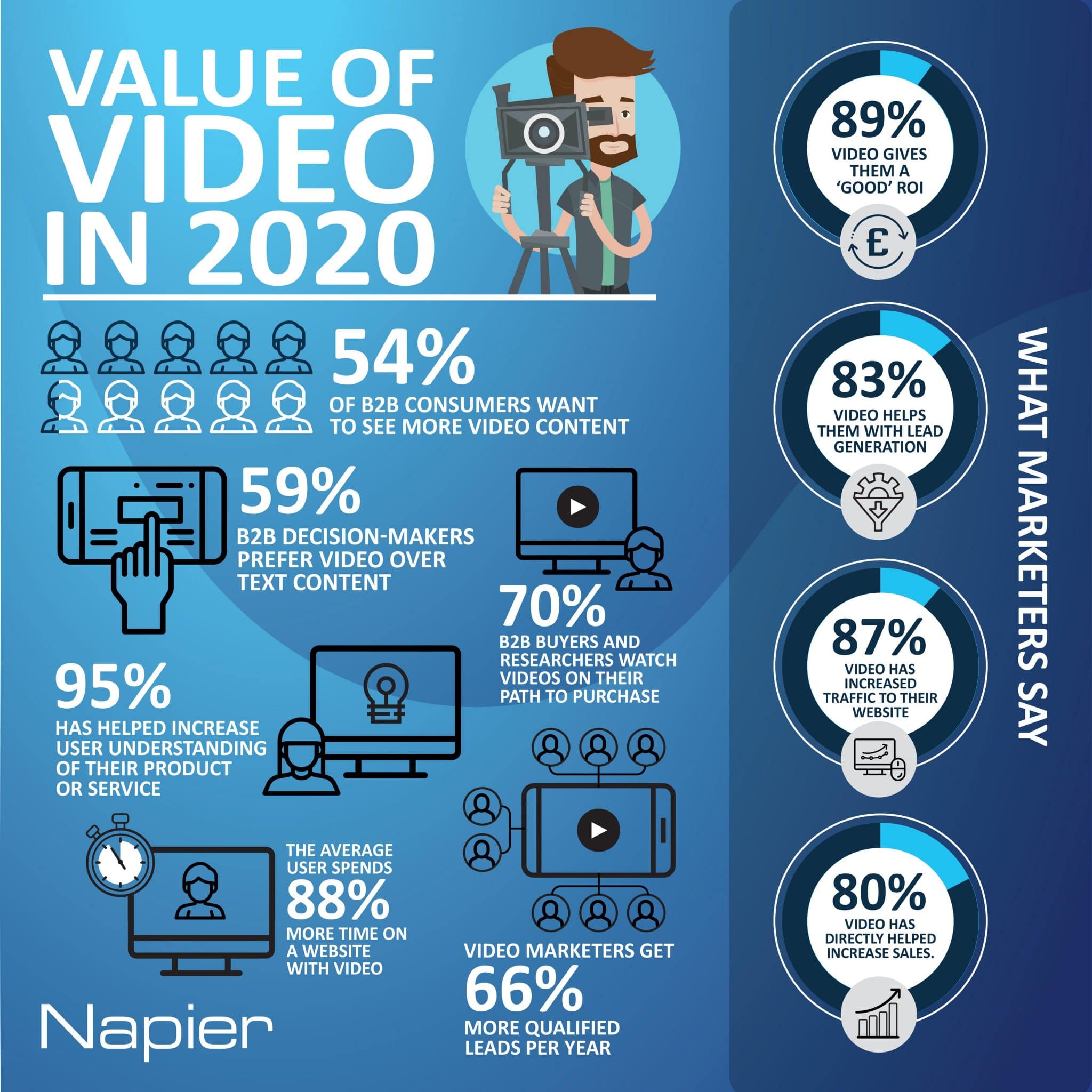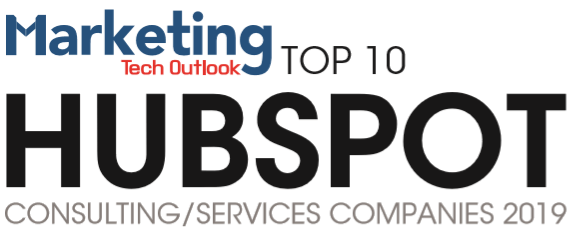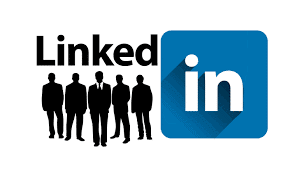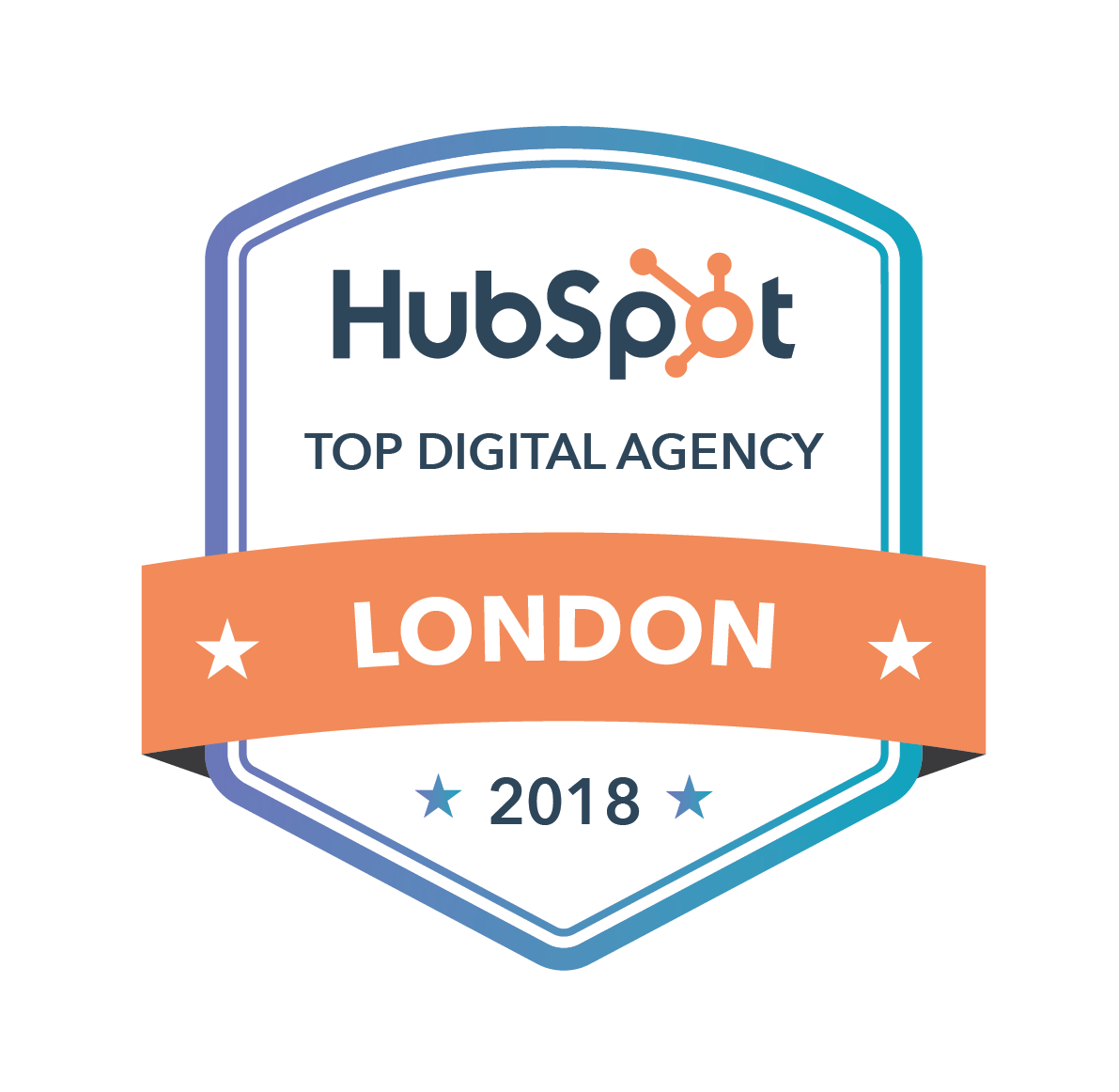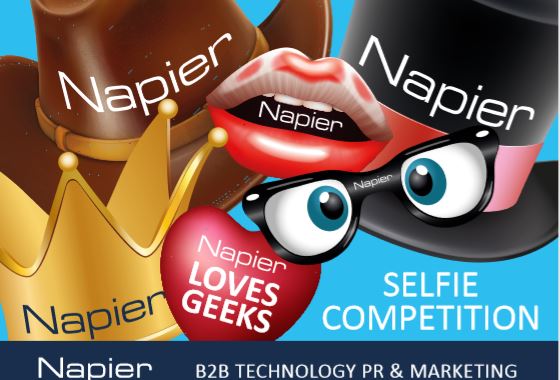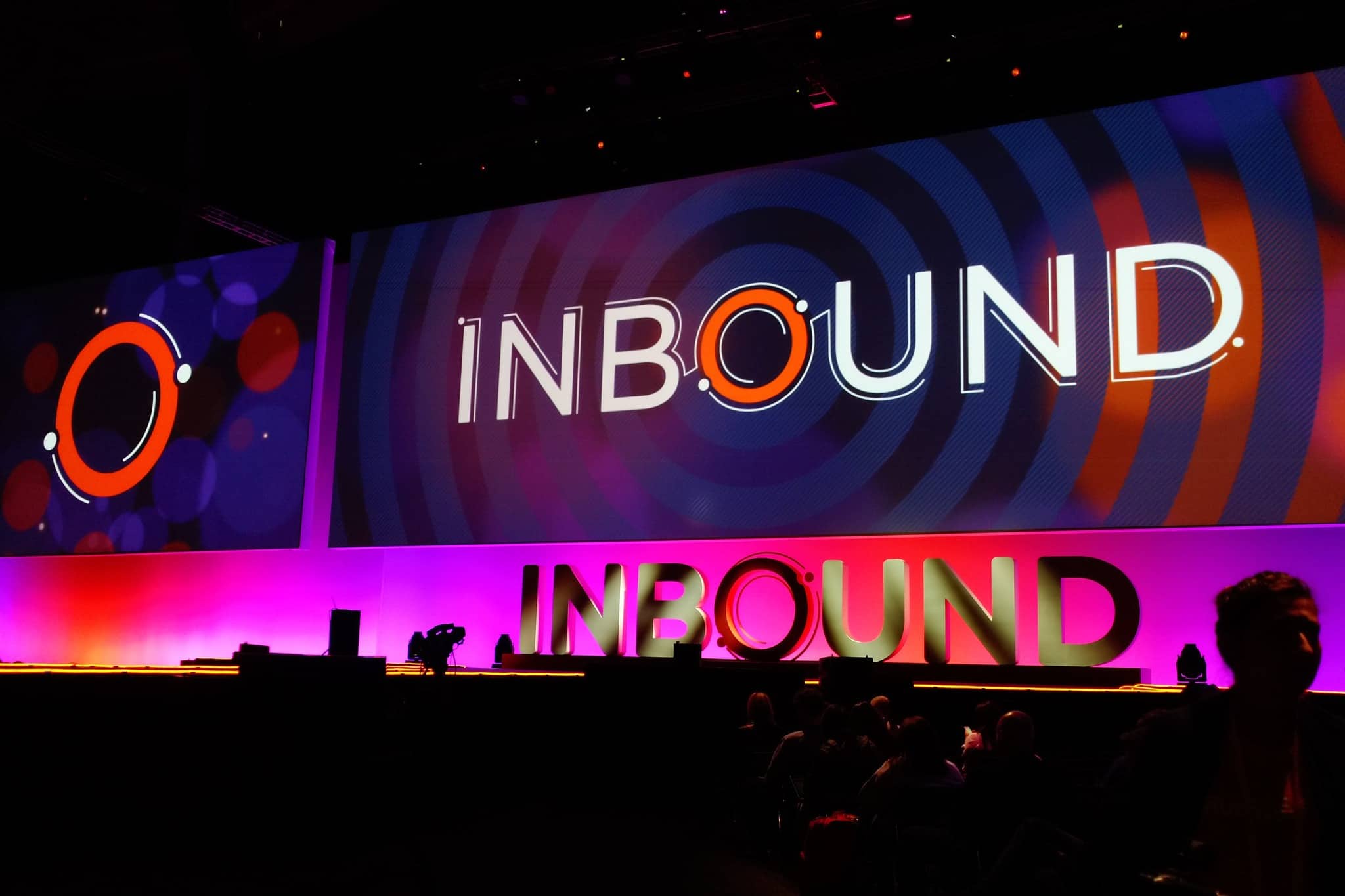EETech Announce Media Partnership with 21ic.com
EETech has announced a new partnership with the largest Chinese electrical engineering community, 21ic.com. This move makes EETech the exclusive media partner to 21ic for North American and European companies seeking engagement with the Chinese market.
21ic currently provides valuable content across 15 industry verticals for the Chinese electrical engineering community, covering news products, applications, and trends. With more than 1.1 million registered users and 12 million monthly page views, 21ic provides leading online resources for the EE community in China.
Adam LaBarbera, co-founder, and CEO of EETech commented “This partnership provides an incredible opportunity to expand our community of engineers and support a growing market. 21ic is the largest electronics website in China. Partnering to unify our audience and deliver meaningful content is the foundation for our continued growth as a key resource for the global engineering community.”
“This partnership enables EETech to provide greater support and a wider range of reliable, quality resources for our growing EE community,” added Bob Dumas, Vice President of Sales at EETech.
For more information on this partnership, please view EETech's website here.
Semtech's Lauren Roady - Marketing Expert Interview
Lauren Roady, Digital Corporate Marketing Manager at Semtech, is the latest marketer to take part in our marketing expert interview series. From Lauren's top tips for marketing automation campaigns to her view on the 3 biggest marketing challenges, we asked Lauren a variety of questions to learn everything we could about our latest marketing expert.
In which marketing activities do you specialise?
I’ve had the great opportunity to support everything from event marketing to sales enablement in my career so far, but I’ve found my happy place in digital marketing analytics. Digital marketing itself is an enormous landscape, so “specialty” is probably a misnomer. There are so many hats to wear in this field, every day brings a new challenge, plus the standards and toolsets are constantly changing. I’m a content creator, UX designer and statistician rolled into one. In school, I excelled at math and statistics, and love a good Pivot table, so the data analytics that come with digital marketing are like a warm cup of tea for me. You see a lot from this behind-the-scenes position in an organization; people outside of marketing communications have no idea the amount of elbow grease that can go into a single campaign. It’s rewarding to be able to measure the results and celebrate with the hard-working team that made it happen.
How did you get to this point in your career? Was it planned, or did you just take opportunities when they appeared?
In college I studied graphic communication with an emphasis in print and image management, earning B.S. from California Polytechnic State University San Luis Obispo, one of the few graphic communication programs in the U.S. I love print because it is a fantastic intersection of design and technology. There’s an amazing world of engineering and science behind those tiny little dots on paper that make a printed image. From packaging to signage, print is all around us every day. While I didn’t choose to make a career out of printing, that knowledge is advantageous in marketing communications where we are constantly using imagery and visual experience to communicate or enhance our message.
By sheer luck, I’ve had the great opportunity to contribute to high growth businesses in earlier roles in my career. In a previous role, I rocketed from the first marketing professional on payroll to the manager of a department covering complete in-house services for multiple business units in just a few short years. That level of exposure to continuous challenges and growing responsibilities gave me the opportunity to sample from every specialty within marketing communications. That experience wearing many hats in a high growth organization gave me the flexibility to pursue a more specialized role in digital marketing.
What are your top tips for a great marketing automation campaign?
- Set it but do not forget it. Messaging changes, market maturity evolves and new content is constantly becoming available. Drip campaigns should be revisited on a regular basis just to refresh content alone. Performance metrics should also be reviewed to optimize deliverability and engagement.
- B2B can learn a lot from B2C. Every morning I open my personal email and delight in the clever campaigns that consumer brands are running to get my attention. It’s inspiring and challenges my paradigm in B2B. Though the sales and buying process for B2B and B2C are starkly different, people are still people and principles of brand awareness and thought leadership still apply when influencing prospects.
What have been the biggest changes to B2B marketing in the last 3 years?
The bar is continuously rising on best practices. By my observation, personalization was the golden ticket in the Tenties (2010-2019). But now segmentation and personalization are a bare minimum, and new privacy laws rolled out in recent years (GDPR, CCPA) make leveraging personally identifying data a delicate dance to maintain consumer trust.
The vast amount of tools in the market have also been game-changing. What sets “good” marketing apart is not just a clever marketer any longer, but the variety and complexity of tools at his or her disposal. The IBM Marketing Trends report, which I adore, coined the term “martecheter” in its 2019 issue. A martecheter is a technically savvy marketer, and IBM states this is one of the greatest marketing advantages.
What do you think will be the biggest change in the way you approach your campaigns in the next 3 years?
It’s very easy to stay siloed in a warm a cozy marketing communication bubble and get lost in the metrics of digital marketing. The challenge for professionals in my role is to come up for air and get a reality check by aligning with sales and business development, to more effectively fill the lead funnel.
In the martech world, I am very interested to see how artificial intelligence will be further applied to everyday marketing tools. Advancements in natural language processing and search sentiment, for example, will be interesting to watch.
What are your 3 biggest marketing challenges?
- Demonstrating return on investment. Marketers create so many touchpoints for a brand, many of those offline or outside of our marketing automation platforms, making it difficult to attribute campaign efforts to revenues.
- Sales and marketing alignment. Has a B2B marketer ever answered this question without mentioning sales and marketing alignment? This is a classic challenge, particularly for corporate marketing where long term thought leadership and awareness objectives are often prioritized over near term sales conversion objectives.
- Balancing experimentation with known formulas for success. Trying a new strategy, tool or process can often be disruptive, but well worth the temporary discomfort. Making mental space for experimentation is hard, but necessary in order to evolve and deliver new value to our customers.
Tell us about the best campaign you have ever run.
Sometimes the most outstanding campaigns can be shockingly simple. At Semtech we launched a campaign offering side by side comparison of two connectivity platforms for the Internet of Things (IoT). Campaign elements included a gated infographic, blog, and week-long social media campaign. The organic traffic and social engagement were so outstanding, we realized it would be a strong candidate for a pay per click (PPC) campaign. The content itself was simple and low budget to create. Years later, whenever this campaign is reshared on social media, it’s almost as powerful as the first time. The key to success with this campaign was simply the buzzworthiness of the keywords.
Which campaign didn’t work well, but taught you a lot?
Early in my career, I made the mistake of allowing too much human error to influence campaign reporting. I’ve learned that unless you’re using technology and automation to measure a result, you should expect nothing, and certainly should not rely on manually collected or subjective data. It’s humbling when a campaign fails because it reminds me that my preconceived notions or opinions are nice, but what really matters is the data. I keep my favorite quote written on my office whiteboard: “Without data, you’re just another person with an opinion.” - quality guru W. Edwards Deming
If there was one thing you could change about marketing automation systems, what would it be?
I’m quite pleased with some of the new features I see being rolled out around AI. For example, when an email campaign has an above average unsubscribe rate, I like it when my marketing automation system proactively points that out for me and tells me what I could do to improve in the future. There are seemingly endless metrics for me to track, so when a system is smart enough to flag anomalies and bring them to my attention, and then go the extra mile to tell me what to do about it, that system becomes more than a tool, it becomes a critical asset. Analysis paralysis is a real problem in digital marketing, and AI can help direct my attention to where it will make the biggest impact.
If you could get more marketing budget, what would you spend it on?
Data integration and sanitation. The volume and variety of data within an organization and its tools (plus external resources) are so powerful. Harnessing all that data, ensuring it’s clean and reliable, and turning it into actionable insights is the stuff marketers dreams are made of.
And a little bit about you… What do you like to do in your spare time?
I live in beautiful Camarillo, California with my cattle dog and two cats. I enjoy road trips and hikes with my dog, cooking for my family, and reading my way through the public library. In a never-ending pursuit of craftiness, I am teaching myself to sew in 2020.
What career would you have chosen if you couldn’t work in marketing?
I’d probably try to find some way to make a full-time career out of writing Yelp reviews. I love giving feedback, and appreciate when others leave thoughtful, objective reviews for me to read when evaluating destinations, dining, entertainment, etc.
If you had three wishes from a genie, what would you ask for?
- Apparition (a la Harry Potter) – it’s 2020, why are we still wasting time on long plane rides and sitting in traffic?
- Three more hours per day (one uninterrupted work hour, one for personal life, one for sleep)
- A real-world Ctrl+Z button (with unlimited use, of course)
Vicor and Napier Awarded Online Banner Marketing Excellence Certificate by Electronics Weekly
We were delighted to be recognized by Electronics Weekly, alongside our client Vicor, who presented us with a certificate of excellence for online banner marketing 2019.
The certificate was awarded in recognition of outstanding performance and engagement by achieving the highest MPU total number of clicks, and highest Wallpaper click-through rates.
We would like to congratulate Vicor on this fantastic result!
Value of Video in 2020
Over the last few years, its clear that video has become a key marketing tactic, and with the digital landscape continually shifting, marketers have no choice but to deliver their content the way consumers want it.
Yet, some marketers are still hesitant in investing a significant amount of their budget in video. If your still wondering whether a video investment is right for you, check out our infographic below that shares some key video marketing stats, to prove why 2020 is the right time to make your first marketing video.
ETN Announces Embedded Conference Finland for 2020
ETN has announced its 4th annual Embedded Conference Finland for 2020. Taking place on Thursday 4th June at the Lighthouse in Akavatalo in Helsinki, this years conference will focus on the topics of embedded devices and code security.
The event will feature a technical programme and keynote speakers, with Jarno Limnéll a cyber security professor at Aalto University already confirmed, who will provide an introduction to security and why it is such a critical factor.
ETN are currently looking for sponsors, presenters and exhibitors, so if you'd like to get involved, get in touch with Editor-in-Chief Veijo Ojanperä at vo@etn.fi, or Sales Manager Anne-Charlotte Sparrvik at ac@etn.fi for more information.
Napier Named in Top 10 HubSpot Consulting/Service Companies
Here at Napier its no secret that we are a HubSpot agency partner, and as such huge advocates of the HubSpot platform. This is why we were delighted to be approached by Marketing Tech Outlook and asked to feature in their special edition of the 'Top 10 HubSpot Consulting/Service Companies' for 2019.
After careful consideration, we decided the most valuable information we could share with their readers, is how Napier uses a unique approach to help clients utilise tools like HubSpot to increase the speed prospects travel through the funnel.
To read our full article please click here, and why not get in touch to let us know your thoughts on our approach, or to find out more about how we can help you.
Theo Van Gelder Announces Retirement
We were sad to hear that Theo Van Gelder, a well known figure and journalist in the electronics industry, will be retiring at the end of this year.
With Dutch publishers continuing to struggle in an increasingly marginal market, Theo has made the decision to retire early and focus on sailing and his many other hobbies from the beginning of 2020.
We wish Theo all the best for the future, and a happy retirement!
Napier's First Trends Webinar
Here at Napier we've decided to take a new approach to sharing our insights of the industry, with our first recorded trends webinar! Our webinar focuses on the latest marketing news and trends including:
- Some good news about the financial performance of the B2B publishing companies in Europe
- The implication of layoffs at Aspencore, the largest global publisher of titles for the electronics design industry
- News from Inbound 2019 about the growth of Account-Based Marketing (ABM)
- Other ideas from Inbound 2019, including LinkedIn tips and sales emails as part of marketing nurturing workflows
Give our recorded webinar a listen today and get in touch to let us know your thoughts! You can also follow along with our webinar transcript featured in this blog below.
Webinar 1: B2B Marketing Trends October 2019 Transcript
Hannah: Hello everyone, welcome to our first recorded webinar on the latest trends in the industry. Trends in the industry something we look at quite regularly so we thought would be a good topic for us to chat about. I'm Hannah, the Business Development Manager at Napier, and I'm with Mike, Managing Director of Napier. Mike, let's start with what you think is the most interesting research, we’ve completed this quarter.
Mike: Well, the really interesting thing we did was we actually asked B2B publishers how well they're doing. And I think, you know despite what you hear, and clearly the market isn't easy. But things are not as bad as you might think. And in fact, of all the B2B publishers we talked to 68% grew revenues suggesting they're all in pretty good health.
Hannah: Were you surprised by the results. Is it what you were expecting?
Mike: No, I think when you listen to publishers you do hear you know tales of woe and you know clearly as I say it's not an easy market, but for 68% of grown revenue was pretty impressive. And in fact, only one of the publishers out of the 25 that replied, actually saw a decline in revenue more than 5%. So, you know, even though the guys that lost in revenue didn't lose very much.
Hannah: What about the US is this just research that reflects what's going on in Europe, or does it count for the USA as well?
Mike: So, the truth is, is this is just a European survey. We did look up both Western and Eastern Europe. But I suspect the story is very different in the US and actually one of the things we'll talk about is what's happening with one of the big US publishers in a minute, so I think the US is somewhat different to Europe.
Hannah: So, there has obviously been a big shift in the US, with Aspencore can you tell us a bit more about that?
Mike: Yeah, absolutely. So, the US does seem to be having a tough time, I mean, obviously Aspencore is a global publisher. So, they have titles around the globe, I think 21 IC is one of their better-known titles over in China. But what's happened is they've let go some of their most well-known journalists so people like Rick Merrick, Clive Maxfield and Steve Ravitch have left the publishing house, and in Europe actually Jurgen Hubner who I think is reputed to be you know one of the best publishers over here has also been made redundant. And at the same time one of their I think best known salespeople Bob Dumas also resigned in the state so a lot of people leaving.
Hannah: So why is this significant like how does this affect the future of Aspencore?
Mike: Well I think it's interesting, I mean, most people believe that Aspencore probably isn't profitable and some of the comments that Yoko Rashida made when she was talking about these layoffs suggest that's the case. But I think clearly there's a new editorial strategy. I suspect they're probably looking less to generate high-quality in-depth articles in house. They're more focused on news and without a doubt I think they've got a greater focus on growing their business in the Far East, and all of these may be valid things to do so it may not be a bad idea but obviously for those of us in the West it's disappointing to see, you know, such well known editors, leaving their jobs.
Hannah: Very disappointing so obviously saying we've lost some of the best journalist’s kind of within the industry. What is the impact of this? Are we going to see any change? Do you think the quality of content is going to decline, or they just put in the trust and that they're still going to produce the same level of content without these journalists?
Mike: I think you know; it's going to be hard to generate the kind of quality of content these guys wrote because they were genuinely some of the best in the industry. Having said that, without a doubt, there are still some great journalists left at EETimes so they still have some very strong resources in terms of generating their own content. But it will be interesting to see. I think perhaps more interesting is the impact that being owned by Arrow has had. So, initially I think Arrow was making use of the publications, to both grow their database, and also influence potential lines. And now I think you know that the reality has come home that under Arrow, the publications aren't making money, and clearly Arrow as a public company needs to do something about it. So I suspect you know there's a little bit of reorganization, a little bit of cost saving and perhaps a little bit of change of strategy as well.
Hannah: Well, it's definitely something that we need to keep our eye on and see what happens in the future.
Mike: Definitely I agree, it's going to be interesting to see what the next step is from Arrow I mean hopefully they'll continue investing and the publications will start growing again.
Hannah: Well, let’s move away from the electronic press industry for a moment and focus on some of your marketing trends findings. I know you recently attended the HubSpot Inbound event and gained some great insight into the continued growth with Account Based marketing.
Mike: Yeah. It's interesting, actually I read recently that I think it was the VP of Marketing for Pardot has decided that account based marketing should now be called account centric marketing and I always feel that when you've got something that people start rebranding then clearly it's kind of hit the mainstream. And to me, you know, the big thing we saw was the size of ABM campaigns and companies where they saw success with ABM growing the number of target customers in their ABM campaigns.
Hannah: And how are they doing that, what are they doing to target, you know, bigger clients on a on a higher level?
Mike: I think actually ABM is a lot simpler in most instances than people think. Conceptually people are targeting customers either through direct mail which is clearly easy, email if they have contacts or perhaps programmatically using, you know, a platform like LinkedIn, which is clearly one of the biggest for ABM. So, the process is fairly simple. I think what is difficult is scaling up. For example, I listened to a presentation by Sigstr that actually developed 1000 customised landing pages, each one targeting a different specific account, and clearly you know generating one landing page is fairly straightforward, generating 1000, even with tools that are available today is incredibly complicated.
Hannah: And would you say you know spending all that time building these landing pages is actually worth the results that they've gained from the experience or is it just a waste of time?
Mike: Well I guess that's the question we're all wondering about, you know, certainly when you listen to the presentations people are talking about fantastic ROI from their ABM campaigns. And that is, to be honest, backed up by industry research and also backed up by own experience. So, you know, I think it's still early days I think it's very hard to compare, but my honest opinion is that ABM will be one of the most effective channels in terms of ROI going forward, and certainly something everyone should be looking at.
Hannah: That's a really interesting insight Mike and I'm sure other companies are also seeing great results from ABM. But let's move on, and why don't we have a chat about marketing silos.
Mike: Sure. I mean this is something I've been talking about for a while, you know, previously companies always thought in terms of the way content was distributed because distribution typically was expensive. But now, I mean increasingly as an agency, we are thinking about content development and content distribution as being our two core competencies. And that's really because distribution is becoming easier with digital technology, but content development is still time consuming and expensive particularly high-quality content development. And so, it's so important to, once you've developed something to be able to reuse it across a multitude of different tactics.
Hannah: So, moving forward as an agency, what are we trying to do to cater to clients on this?
Mike: Well, I think the main thing we're trying to do is help clients think beyond, you know, a campaign is a particular tactic, and think much more about reaching a target audience, and all the different ways they could do that. You know, typically once you've generated the content and you've got you know one channel working maybe that's email. It can be very easy to then promote the same content for example, through online advertising or you know even targeted as ABM. So, I think it's all about thinking about content reuse and how you can make use of content through different channels. Rather than thinking about individual tactics and this isn't you know for example; this is an email campaign. This is an advertising campaign.
Hannah: And do we think we're seeing great results from this? Is this approach working?
Mike: I think the thing it absolutely does is massively increase the return on investment. And the reason for that is our clients are having to invest less to run more campaigns. If you're generating content for each campaign it's very expensive. If you're able to reuse and repurpose content, then suddenly the campaign costs can be reduced quite considerably. So, clearly that helps massively increase the return on investment.
Hannah: That sounds brilliant definitely a step in the right direction of what we want to achieve.
Mike: Definitely, I think also, people are finding that having the same clear messaging across a number of channels, also makes the campaign more effective. So it's not just a cost thing it's also, you know, increasing results as well so you kind of get, you know, basically benefit on both sides of the coin,
Hannah: That's some interesting stuff, thank you, Mike. Okay, why don't we talk briefly about some other trends now. You know it's clear to see that both influencers for B2B technology and podcast have gained momentum. Would you agree?
Mike: Yeah, I mean this is interesting. If you looked, you know, a couple of years ago there were virtually no podcasts really targeting the B2B tech market, and perhaps there was some, to be honest in the IT sector but in the engineering side there wasn't, and increasingly now more and more people, I see, you know, listening to podcasts in our industry, as well as consumers so I definitely think that that is a growing trend, and it's an indication of the ability of individuals to become influencers. And to be honest this is still very early stages, particularly in an industry like electronics, where basically most of the content being shared is being shared through conventional media. But I certainly think you know influencers are going to grow, both in importance, and also grow their followings as well.
Hannah: You know I've heard a rumour that Napier is actually featuring on some podcasts soon.
Mike: Yeah, we've actually been asked to appear on a couple of marketing podcast, but we'll see how that goes if it works out well then we'll obviously share the links but if not, I will try and hide them.
Hannah: So, what else have we seen as we make our way through the last quarter of 2019?
Mike: I think one of the things we're seeing is from my point of view, a little bit of sanity really in terms of measuring campaigns so people are focusing on better and simpler metrics. And increasingly, we're seeing clients and other companies recognising that just going for example for the maximum number of clicks doesn't always make the best campaign. So clients are focusing, you know, very simply down onto metrics that that make a difference. It could be for example, registrations, or it could even be sales in campaigns. And as part of that with simpler metrics, it becomes easier to create marketing dashboards because you've got a more consistent set of metrics across different tactics. And so again we're seeing some clients, looking into building marketing dashboards, really for the whole marketing operation, which is great when you can get that working.
Hannah: So, to finish let's take a look at some key inbound tips and tricks that you've uncovered. Would you like to share?
Mike: Yeah, definitely. So, I'm an inbound we have some great sessions talking about how to you know make campaigns more effective. I think there were there were a couple of things that I found particularly interesting one was a session talking about LinkedIn advertising, and there the speaker was very keen to share the results that he sees through the different formats of advertising. So actually, if you look at what they were seeing for example, sponsored content might get a click through rate of 4%. But text ads were 1/40th of a percent so a massive difference in terms of click through rates. Although actually sponsored content, typically cost more per click. But he was talking about this, and the different approaches, which was very interesting we wrote a blog post on that. I also saw more and more people talking about moving the initial sales approach, away from sales and into marketing so effectively during marketing nurturing campaigns. Companies are increasingly sending emails as though they came from the appropriate salesperson. And this is certainly something HubSpot doing, and claiming it is an incredibly effective tactic and something we're looking at doing both for Napier, and also with our clients.
Hannah: Could you share why do you think the connection emails are so successful?
Mike: So, the connection emails, emails from salespeople, I think it's becoming more of a marketing tech tactic rather than a sales tactic. And clearly you know it's typically is a very simple straightforward email, and it's very focused on getting the recipient to either click through a request a meeting or a call, or maybe reply to the email so I think it benefits from two ways one it's quite personal. And secondly, the email also is very focused and industry focused so it helps marketers write an email that's clearly focused on achieving one objective and we all know, the more you can focus on one objective and any kind of piece of marketing content, the more effective that's likely to be.
Hannah: That’s brilliant thank you. And, you know, this is where we were going to finish today, and we've left a link to our trends page so you can read more detail about what we've discussed today, and we hope our insights have been helpful to you.
Five Stats That Prove Why LinkedIn Should be Part of Your Marketing Strategy
It’s no secret that LinkedIn has significantly increased in popularity over the last couple of years, with B2B marketers flocking to the platform to take advantage of LinkedIn’s specific user base for strategies such as lead generation or to make use of LinkedIn’s publishing platform, as a way to give old content new life.
A staggering 92% of B2B Marketers were recently reported as leveraging LinkedIn over all other social platforms, yet it’s surprising how many companies have still not made the step to integrate a LinkedIn marketing plan into their campaign strategy.
With over 303 million LinkedIn users logging in each month, LinkedIn is one of the fastest-growing social media networks, and provides ample opportunities to marketers looking to target different audiences with specific messaging.
At Napier, we are seeing more of our clients buy into LinkedIn and see the great results it provides for themselves. (Check out our ABM case study to see what I’m talking about) But for the B2B tech marketers who are still on the fence, we wanted to share our top 5 statistics which we believe prove why LinkedIn should be part of your marketing strategy.
45% of LinkedIn Users are in Upper Management
As many marketers can relate, often the biggest struggle is ensuring that specific content is getting in front of the right target audience. Unfortunately, often time and resources can be wasted talking to people who are not influential when making a decision within the company.
According to the latest statistics, in 2019, LinkedIn counts 90 million senior-level influencers, 63 million decision makers and 10 million C-level executives amongst its members. This data not only reinforces LinkedIn’s vision ‘of all professionals in one place’ but proves that LinkedIn is the right place to get in front of the right people.
The Average Decision Maker Reads 10 Pieces of Content Before Making Their Purchase Decision
Content seems to be at the heart of every marketing strategy, and it’s no different on LinkedIn. In fact, there are 9 billion content impressions in LinkedIn feeds every week.
It’s clear more than ever that customers are evidently doing research online before they buy and are increasingly turning to LinkedIn to get the content they need to make the next step in their journey. With the average decision maker reading 10 pieces of content before they make their final purchase decision, LinkedIn offers companies the opportunity to provide regular content to their target customers, tailored specifically to solve a problem.
If done right the results can be great, with studies showing that 43% of B2B marketers have sourced a customer from LinkedIn.
46% of Social Media traffic is coming to B2B company sites from LinkedIn
On average, studies have revealed that a staggering 46% of social media traffic going to B2B company sites is from LinkedIn.
As B2B marketers make LinkedIn a focus for content distribution, it is pleasantly inevitable that the traffic to your website will grow. Using LinkedIn to link to gated content on your website for example, will not only increase traffic, but also provide quality leads, as the combination of LinkedIn’s advanced audience targeting capabilities and relevant content, can ensure that this increased traffic will convert into leads. In fact, 79% of marketers say LinkedIn is an effective source of generating leads.
LinkedIn InMail has a 300% Higher Response Rate than Email
LinkedIn InMail is being hailed as a new revolutionary sales tactics for B2B Marketers, achieving a 10-25% response rate, 300% higher than emails.
LinkedIn’s ‘sponsored’ InMail’s offer a new channel of communication for companies to interact directly with target decision makers, outside of their saturated inboxes. These sponsored InMail’s offer a unique channel for getting your message in front of high-level decision makers; and with features such as push notifications which alert your target customers when they have a new InMail, to the optimal time feature of only sending InMail’s when your target is online, it’s clear to see why this channel of communication is so effective.
LinkedIn is 277% More Effective for Lead Generation than other Social Media Networks
Social media is often a huge contributor to a company’s lead generation efforts, and a recent study from HubSpot found that LinkedIn is 277% more effective for lead generation than Facebook and Twitter.
The truly great element of LinkedIn is that professionals from all industries are investing time in the platform, and LinkedIn’s range of targeting features from sponsored updates, account-based marketing and InMail’s, means it’s easier than ever to focus on target segments of your audience with tailored ads, content and images.
If LinkedIn advertising is something you are looking to implement into your marketing strategy for 2020, or something you want to know a bit more about, why not get in touch today and find out how we can help you.
WTWH Media Acquire Advantage Business Media Assets
In June of this year, we wrote a blog about the sad closing of publisher Advantage Business Marketing (ABM), with the future of publications like ECN left uncertain. So our interest was peaked when we heard the news that WTWH Media was transitioning long-time brands ECN Magazine, Medical Design Technology, Product Design & Development, and Wireless Design & Development into Design World, EE World Online and Medical Design & Outsourcing.
The announcement also revealed that although the R&D 100 Conference & Awards will continue, the R&D magazine will re-launch on a new platform as R&D World, with a series of targeted vertical technology sites expected soon.
After a quick search, we came across a webinar held on the 15th October and hosted by Scott McCafferty, co-founder of WTWH Media, explaining the acquisition of ABM's assets and what its means for the publications' future.
It seems that shortly after ABM went bust, WTWH Media found opportunity amongst the publisher's assets, acquiring the R&D and ECN 'pillars' of ABM. Scott explained that WTWH Media want to revitalize the brands and to accomplish this has three focuses for the future. This consists of unwinding the brands, rebuilding them, and growing them. Although many members of the old staff have moved on from ABM, they are engaging with a few of the original staff members, enlisting their help to ensure a smooth transition.
Alongside the acquisition of the R&D and ECN 'pillars', WTWH Media has gained access to ECN's database of 262,303 contacts and ECN's customized list of 83,177 digital subscribers.
It will be interesting to see the approach WTWH Media take with these brands, as if the news of the Aspencore redundancies is anything to refer to, the growth of publishers and publications is declining in the US. Perhaps Scott sums it up as best, as he reveals that moving forward they are looking 'to do the opposite of what happened in the past', and with certainly lots of plans for the future, we will be interested to see what they do to achieve success.
Elektronik Magazine Introduces New Issues for 2020
Elektronik magazine, has announced 'Elektronik 2.0', as the editorial team has revealed that for 2020 instead of regular and special editions, the magazine will introduce issues that specifically cover the spectrum of trends and 'hot' topics within the industry.
The new issues will feature technology and business/markets themes, and aim to provide readers with a 'one-stop-knowledge-shop' on topics that are currently fundamental to their readers.
With previous editions of the magazine featuring a mix of random topics and resulting in readers 'cherry-picking' the parts of the magazine they are reading; this move means a specific edition of the magazine will offer readers a comprehensive source of information on one topic (e.g: the automotive industry) and advertisers a market-analogue advertising environment.
Elektronik has also announced the introduction of Social Media Plus and Social Media Chinese, offering advertisers LinkedIn, Facebook, Twitter and newsletter advertising.
At Napier, we think its great to see a publication modifying their approach to engage with their readers more successfully, and we look forward to seeing the response this approach receives from the industry.
What is Active View Viewability and How Can You Improve its Performance?
Ian Poole, editor of Electronics Notes, has provided some great insight with his blog posts in the past, which is why we were delighted to receive Ian's latest blog detailing what Active View Viewability is, and his journey to adopting Google Ads as the primary form of revenue generation for Electronics Notes.
What is Active View Viewability and How Can You Improve its Performance?
Many advertisers are now opting for programmatic forms of advertising such as Google Ads or one of the variety of other systems available. This is done to reduce costs and increase performance. As a result, advertisers need to be aware of various factors in choosing which websites their advertisements should appear on, if they want to select websites on which their ads should appear. From the other viewpoint publishers need to be aware of factors that make their sites attractive to advertisers whether they use programmatic banner advertising or directly placed ads.
In the electronics industry, companies have traditionally adopted directly placed ads. However, with click through rates diminishing and advertisers wanting to improve their return on investment, many have adopted other tactics including email campaigns and content marketing.
However, banner advertising can still provide some excellent returns - not only does it provide the click throughs directly onto a tailored landing page, but it also gives a high level of branding. Some reports have indicated that the branding aspects of banner advertising are equally or more important than the number of clicks received.
When selecting where to advertise, one of the key metrics now being used is that of Active View Viewability (AVV).
According to Google: "Active View metrics have been created in compliance with industry standards for measuring the viewability of online ads, as developed by the Media Rating Council (MRC). According to MRC guidelines, the standard for measuring the viewability of ads, are as follows:
A display ad is counted as viewable when at least 50% of its area is visible on the screen for at least 1 second. "
Traditionally many advertisers have requested that their ads appear above the fold, and this normally gives better results, but the actual picture is a little more complicated and AVV provides a defined metric to understand what is happening better.
At Electronics Notes, I have adopted Google Ads as the primary form of revenue generation. It enables me to focus on content generation all the time without hassle of managing the ads.
I have been on a journey to improve the overall site performance and improve its attractiveness to advertisers, and I hope that others can learn from this.
One key element of this journey has been to improve the AVV performance, so that advertisers using the Google Display Network (GDN) will want to target the site via Google Ads as what is termed a "managed placement."
It really started when I attended a day at the Google offices in London for AdSense users. (AdSense is the publisher side of Google Ads). Here the topic of AVV came up and returning home, I discovered my AVV was well below 40% - it was hardly surprising that at this time Electronics Notes was not a particularly attractive proposition for advertisers.
At the time, I used a large proportion of the Google delivery below the fold - ads above the fold were used by other advertising schemes. Although there are some advantages to showing ads just below the content, the AVV performance was very poor, so I made a number of changes.
Before detailing the changes, it helps to understand where the ad positions are located on the page:
- Top leaderboard - a 728x90 slot at the top of the page in line with the logo
- Top MPU - a 300x250 at the top of the right hand column
- Bottom MPU at the bottom of the right hand column,
- Skyscraper - 160x600 to the right of everything else and towards the top of the page
- Bottom leaderboard - 728x90 underneath all the content
Firstly, I enabled the advertisement positions above the fold for Google Ads - namely the Top leaderboard and Top MPU. Positions below the fold were given to another network that preferred below the fold advertising.
Next, I moved Bottom MPU up to around the page fold and enabled it for Google Ads.
The next stage was to enable the floating or "sticky" right hand skyscraper ad for Google Ads. Permission was required for the use of "sticky ads," and Google requests certain requirements are fulfilled. These were all very sensible and so with this permission gained, I started to show Google ads here. In terms of AVV, this performed very well, and it offered advertisers a good position.
Similar changes were made to the mobile site which was very important because about 45% of my traffic is mobile.
All of these changes required extensive experimentation but significantly improved the AVV performance, and we had a large rise in AVV figures.
A few interesting figures came out of this. The leaderboard at the top of the page did not score the highest AVV figure - people scroll down very quickly, often before the ad had loaded. I could have improved the AVV figure for this position by moving the ad beneath the logo, etc, but I retained it where it was to preserve the page layout and retain the "user experience."
The "sticky" skyscraper had an excellent AVV figure, which is not a surprise as it stays within view all the time.
The MPU at the top of the right-hand column performed well, but again, it suffered from people scrolling down quickly. That was particularly interesting. The most interesting one was the MPU position just on or below the fold. This performed better than the one at the top of the right-hand column. The reasoning for this is that it comes into sight once people start to scroll and remains there for a while.
In view of the MPU performance, I later decided that one ad in the right-hand column would suffice. I moved the top MPU position down almost to the position of the lower one, so that it was virtually on the fold, and removed the lower one.
This probably did not make too much difference to the overall site performance and revenue, but it reduced the ads by one which was useful from a user experience viewpoint and slightly improved the overall AVV figure.
So far, I have not mentioned in-content ads. I enabled these for both the mobile and desktop formats. Introducing these has not made much difference to the AVV figures as Google uses its AI algorithms to select the optimum positions. These have performed well and provide a good click through rate.
With in-content ads in place, it has also been necessary to look carefully at the number of ads appearing, and we are still experimenting with this. I am also trying to improve the quality of the content, so that people still want to visit the site. Pages have to be sufficiently useful to attract people, and I hope we are winning the battle here.
When I started on this journey, I did some research into the typical AVV figures that were being obtained by websites. Figures varied according to the research organisation, the country where the website was located, and the sector, but it appeared that typical figures were in the region of 45 to 55%. With the changes I made to Electronics Notes, I started below 40% and now have been consistently able to maintain figures of between 60 and 65%, although it does vary a little on a day to day basis.
There are a number of messages to take from this. The position of an ad within the page is crucial to its performance, and it is not just the top position that is best. Sometimes positions on the fold work well as they are in view for longer. It also helps to have a reasonable amount of clear space around the ad to prevent accidental clicks, and to make it nicely visible.
Programmatic Ads like Google Ads not only provide very cheap advertising when compared to directly placed ads, but they also give more insights into the performance for the advertiser. It is possible to select websites with high AVV ratings so that advertising will give the highest ROI.
Growing B2B Agency Napier Welcomes Two New Hires
30th September 2019: Napier, a leading B2B PR and Marketing agency has welcomed two new hires to its team.
Claire Davis joins the team as an Account Manager with over 15 years’ experience working for London-based client and agency side businesses. Claire has managed extensive marketing activity through-the-line, and her account management skills include B2B and B2C campaigns many of which have Pan-European and global reach.
Hayden Reader also join the Napier team as Marketing Specialist, with a full diploma in Information and communications technology. Hayden brings a creative background to his role, and will support the Napier team in various ways, including content marketing, email marketing and marketing automation. Whilst Hayden is working within his role at Napier, he will be completing a Digital Marketing degree with Chichester College.
Napier is delighted to welcome both Claire and Hayden to the team and we look forward to them settling into their respective roles.
7 Content Marketing Stats Every Marketer Needs to Know
As the B2B marketing world continues to evolve, it’s important to stay up to date with the latest from the content marketing industry. With some marketers doubting that a content marketing strategy is still important, the latest content marketing stats can provide great insight, so you know that the time spent on your content marketing strategy is not only important, but also worth it, to achieve growth.
But with so much research out there, it can be time-consuming to hunt down the most relevant and important stats by yourself. This is why we’ve pulled together the top 7 content marketing stats every marketer needs to know, to show why a content marketing strategy is still so important and how an effective strategy can bring great success for your company.
Content Marketing costs Up to 41% Less Per Lead Than Paid Search
Your current marketing mix might include several campaigns across a variety of platforms, including paid ads, social media marketing and email marketing. So why should your content marketing strategy be a priority over those activities?
Well, according to research by Oracle, content marketing costs up to 41% less than paid search for larger businesses, and 31% for mid-sized companies.
Prospects Want Content – Especially White Papers
White papers and e-books are arguably some of your most valuable resources for attracting leads, and according to Curata, white papers are among the top 10 tactics used by B2B content marketers, with 78% of prospects in the last year, reading white papers to contribute to a B2B purchasing decision.
Custom Content Creates a Relationship Between the Company and a Customer
Demand Metric revealed that 78% of customers perceive a relationship between themselves and a company when receiving custom content, with 90% of customers finding custom content useful.
As a simple yet extremely effective tactic, custom content allows you to tailor content with the company's branding, and provide them with high-quality, relevant and valuable information; and with 82% of customers feeling more positive about a company after reading custom content, it is clear to see this is a tactic that is working.
Content Marketing Generates Three Times as Many Leads as Traditional Marketing
In comparison to traditional marketing tactics, content marketing can generate three times as many leads, while also reducing cost by 62%.
It’s important to understand the different benefits content and traditional marketing can create for your company; but a good content marketer will know that if done right, content marketing will not only help you attract leads, but also nurture them through the funnel at the same time.
59% of B2B Marketers Consider Blogs as the Most Valuable Channel
Blogs should be a vital, if not the main, part of your content marketing strategy. Blogs are an easy yet effective way to inform, and interact with your audience, and are easy to share on different social media platforms.
With 59% of B2B marketers considering blogs as the most valuable channel, and databox revealing that the average conversion rate for a blog is 19% (the survey revealed 1-5% of visitors to blogs turn into a newsletter subscriber), it’s hard to argue that the writing and distribution of blogs shouldn’t be a top priority for content marketers.
48% Of Marketers are Making Youtube Video a Priority
Visual content marketing should also be an essential part of your strategy. From images, infographics and videos, this is another great way to get in front of your audience.
With the HubSpot state of inbound report revealing that 48% of marketers are making YouTube video a priority, and Cisco reporting that by 2021, video will represent 82% of all internet traffic; it's clear to see video isn’t going anywhere, and content marketers should seriously evaluate adding videos to their content marketing strategy.
Content Compliments Traditional Sales Techniques Perfectly
Still not convinced that content marketing is important? According to WordStream, approximately 49% of marketers are producing content to align closely with various stages of the sales cycle.
If used effectively, your content marketing strategy can target customers at each stage of the sales funnel, providing them with content which answers their pain points at the right time, ensuring you are also nurturing current leads, and retaining the users you already have.
Get in Touch
At Napier, we use our four-step approach to design and continually optimise campaigns that convert awareness to opportunity more quickly, increasing your prospects’ momentum through the funnel. If you want to find out how we could help you with your content marketing strategy (or another issue you may be facing), then get in touch in today!
New Data Reveals That More Than 50% Of Google Searches End Without a Click to Other Content
We recently read a blog written by Rand Fishkin, co-founder of SparkToro, that discussed new data from an update to Fishkin’s initial Google clickstream data study; revealing that in June 2019, for the first time, the majority of Google searches ended without a click on an organic or paid search result.
Using data from Jumpshot, Rand explored what these latest updates mean for marketers and the future of SEO; and in this blog we’ve pulled together some of his key (and most interesting) findings to share with you.
The updated data revealed that as of June 2019, searches made on both mobile and desktop resulted in 42.25% of organic clicks, 4.42% of ad clicks and an astonishing 50.33% of zero-click searches.
Looking at data from 2016 to 2019, it's clear to see desktop has not changed much over the last three years, with organic only down a few percent, and the results of June 2019 not far off from January 2016.
However, on mobile, where more than half of all searches take place, the results have presented a consistent pattern, with organic falling by almost 20%, while paid has nearly tripled, and zero-click searches have been on a significant rise.
There could be a number of reasons for this, if you consider Google’s increased aggression with how ads and instant answer-type features appear on a mobile device, or perhaps it’s the result of Google sending a huge portion of search clicks to their own properties (according to Jumpshot, Google sends 6.01% of all searches (~12% of search clicks) to websites owned by Alphabet, Google’s parent company).
So, what can a marketer do to ensure they are still achieving SEO success amongst these changes? Rand details three key ways:
- Make sure you are trying to find new ways to get value from zero-click searches
- Seek out keywords that have a higher CTR opportunity
- Get your content optimised on Google’s own properties (YouTube, Maps, Images, AMP, Knowledge Panels, etc.)
To find out more and read Rand’s full blog on the results of the new data, please click here.
elektroniknet.de Extends Reach to the Chinese Market
elektroniknet.de, a WEKA FACHMEDIEN publication, has announced that it is now extending its reach into the Chinese Market, by not only delivering content in Chinese, but also offering advertisers the opportunity to specifically reach the Chinese market through its subpage elektroniknet.de/chinese.
This move is particularly important for WEKA FACHMEDIEN, as China has been the most crucial trading partner for the Federal Republic of Germany since 2016 - and Germany is the most important European trading partner for the People's Republic.
At Napier, we think its great to see an electronics publication expanding into the Chinese market. With elektroniknet.de already achieving impressive performance figures (the website received a total of 12.17 million page impressions in 2018), this decision can only bring further opportunities for companies to increase their global reach; and we look forward to seeing the results it provides for both advertisers and companies.
Napier Partners with Market Analysis Experts Vantage Research
Napier recently started a partnership with Vantage Research, experts in market analysis, giving our clients access to invaluable information about the opportunity in countries around the world.
Vantage provides a detailed report of where the business opportunity is for your company in major international markets. Designed to pinpoint ‘serious contenders’ for international expansion the market entry reports include:
- A breakdown of where Demand is likely to be concentrated for the client’s offer and why.
- Analysis of key Economic and Regulatory factors, likely to impact the opportunity
- An insightful Competitor Analysis giving a SWOT summary of the client vs competitor brands
- Benchmarking – expert witness rankings of the key competitors, market gaps and entry options
Vantage can also offer more in-depth analysis of the markets that are most attractive, enabling our clients to plan market entry with more information and context. With Vantage’s extensive experience in the engineering and manufacturing sectors, this partnership supports Napier’s commitment to an insight-led approach, providing our clients with a great opportunity to optimise market entry plans.
If you’re interested in finding out more, why not drop me an email, and we can set up a discussion to identify potential target markets you could be missing.
New Delhi Print Media Announces 4th Edition of ‘The Spotlight on Indian Electronics'
New Delhi Print Media has announced the 4th edition of its yearbook 'The Spotlight on Indian Electronics', which is due to be launched in May 2019.
As the electronics industry in India continues to rapidly grow and evolve, the 2019-20 edition of 'The Spotlight on Indian Electronics', delivers useful information to professionals about the state of the industry in India. The report provides a detailed study and SWOT analysis of the ecosystem for the high priority product markets, as well as identifying the future drivers of growth amongst various segments in the industry.
We think its great to see a media house providing such a useful piece of content, which allows professionals from across the globe to understand the complete picture of the Indian electronics sector.
My Work Experience Week with Napier
Lily McIntosh, a Year 10 Durrington High School Student recently completed a week's work experience at Napier. Read her blog to find out what she learnt during her week at the Napier office:
My work experience at Napier gave me a chance to learn about what it’s like to be in the workplace and an idea into careers you could apply for in the future.
I am a Year 10 Durrington High school Student who is currently taking Business, Drama, BTEC Digital Information Technology and History as my GCSEs. Within my GCSE courses they have taught me how to set up a business, promote products and to target a certain audience. I decided to do my work experience at Napier Partnership in Chichester, because I thought it was suited to my GCSE’s and wanted to explore what working in a B2B marketing and PR company would be like.
Over the last week, I have learnt about researching and finding the right stories for the Directors' social media accounts, and how to publish and schedule Tweets using HubSpot. I also learnt about Inbound Marketing, and why it is so important for a modern marketer’s strategy.
Other opportunities I have had, include learning about ad design and video editing, with Napier’s graphic designer, Rob. Rob even showed me how a video is created through to the finished product. I have been shown how to use HTML coding for emails and websites, which is confusing at first but once you have your head wrapped round it all, it is not so difficult.
Overall, my experience here has been great, the Napier team has been very warm and welcoming during my time here. I have enjoyed learning new skills I could use in the future and in jobs that one day I might apply for.
Thank you to Napier for the insight into the world of work.
A 'Napier Nine' Video... Get to Know Account Director Rhianna Bull
In our ‘Napier Nine’ video series, we’ve been taking the time to learn more about the team. In this instalment we introduce you to Rhianna Bull, Account Director at Napier.
Watch the video below to find out the four words Rhianna would use to describe herself, her strongest quality, and the fictional place she would most like to visit, as she answers her nine questions…
Missed the other ‘Napier Nine’ Videos in our Series? Watch them Now!
- A ‘Napier Nine’ Video… Get to Know Managing Director Mike Maynard
- A ‘Napier Nine’ Video… Get to Know Media Analyst Rachael Penfold
- A ‘Napier Nine’ Video… Get to Know Business Development Manager Hannah Kelly
- A ‘Napier Nine’ Video… Get to Know Director Suzy Kenyon
- A ‘Napier Nine’ Video… Get to Know Director Dave Ingle
- A ‘Napier Nine’ Video… Get to Know PR Specialist Clare Reader
- A ‘Napier Nine’ Video… Get to Know PA and HR Manager Debbie McIntosh
- A 'Napier Nine' Video.. Get to Know Account Administration Executive Danielle Robertshaw
A 'Napier Nine' Video... Get to Know Account Administration Executive Danielle Robertshaw
Danielle Robertshaw, Account Administration Executive at Napier, is the latest to take part in our ‘Napier Nine’ video series.
Discover Danielle’s secret skill, her favourite quote and what she would spend her last £20 on, as she answers her nine questions…
Missed the other ‘Napier Nine’ Videos in our Series? Watch them Now!
- A ‘Napier Nine’ Video… Get to Know Managing Director Mike Maynard
- A ‘Napier Nine’ Video… Get to Know Media Analyst Rachael Penfold
- A ‘Napier Nine’ Video… Get to Know Business Development Manager Hannah Kelly
- A ‘Napier Nine’ Video… Get to Know Director Suzy Kenyon
- A ‘Napier Nine’ Video… Get to Know Director Dave Ingle
- A ‘Napier Nine’ Video… Get to Know PR Specialist Clare Reader
- A ‘Napier Nine’ Video… Get to Know PA and HR Manager Debbie McIntosh
- A 'Napier Nine' Video... Get to Know Account Director Rhianna Bull
New Electronics’ Peter Ring Interview
We recently asked New Electronics’ Peter Ring to participate in an interview with Napier, to discuss the organisation of his events and the successful results he receives from all the hard work. Read the interview below to discover how many people Peter reaches through the events, and the reason why events such as the BEEAs and Embedded Design Show were formed.
How long have you been running events alongside New Electronics?
Since 2013 when we launched the Electronics Design Show. This year we added a one-day roadshow on PCB Design and Manufacturing which was well received, and it’s running again on May 9th 2019 at Silverstone.
Why did you start running events? What are the goals for the events today?
We felt there was a gap in the market for a design focussed event, as publishers of both New Electronics and Eureka we are in an ideal position to deliver the audience which is often the biggest challenge. Each year we get around 4,000 designers to attend over the two days. Adding shows/events to our channels to market has given New Electronics a much higher level of visibility.
How is revenue/profit split at New Electronics between the publication, the database and events?
Online revenues account for a third of New Electronics revenues with print, inserts, projects and PCB making up two thirds. The EDS revenue sits in MA Exhibitions a separate company to MA Business who publish New Electronics. EDS turned over £1.2k million in 2018.
Do you have a specialist team running the events? How much time do the events take from the editorial team?
We do have dedicated marketing teams for EDS and PCB, Neil puts a lot of effort into creating and running the EDS Conference content, but it creates good content for the magazine too as well as helping attract the audience for EDS.
How many people do you reach through your events?
4,000 plus visit EDS and 1,000 came to PCB Design which is co located with FAST an adhesive event and Engineering Materials Live.
How does this compare to the readership of New Electronics?
We send out 15,000 copies of New Electronics reaching the universe of UK electronics designers which is 53,914.
How do you judge the success of each event?
Year on year visitor increases plus we track the rebook during the Shows, at EDS 2018 we had an 80% on site rebook
Why do you run the BEEAs separately from the Engineering Design Show?
We prefer our Awards to be a daytime business event. BEEAs celebrates their 10th anniversary in 2019 and London offers a lot of choice on venues. We were in County Hall this year, taking it to Coventry to run alongside EDS is not in our current thinking.
What is the most fun for you: the show, the awards or the publication?
Actually we really enjoy all of it but EDS gives us all a lot of pleasure. Meeting readers that appreciate New Electronics creating a platform for them to meet 220 exhibitors in one day, plus exhibitors returning year after year as they get great leads from EDS is very satisfying.
Napier Listed as One of the Top Digital Marketing Agencies in London
We are thrilled to announce that HubSpot has listed Napier as one of the top digital marketing agencies in London. With fierce competition, this is a great achievement that demonstrates Napier's consistently high standards and accomplishments.
Mike Maynard Managing Director says" As a HubSpot agency partner, it's fantastic for the Napier team to receive recognition after all our hard work this year, and we look forward to maintaining this momentum and achieving even more success in 2019!"
Winner of the Elektra Selfie Competition Revealed!
Congratulations to Alex Price, Marketing Manager at Vicor, who is the winner of the Napier Prop Selfie Competition recently held at the Elektra Awards. See Alex's winning picture below:
Top things we learnt at INBOUND 2018
Earlier this year, I attended INBOUND – one of the best and biggest marketing conferences around. I attended last year’s too and as always, I took full advantage of the advice and tips that INBOUND provided.
One of the key sessions I went to at INBOUND this year, was ‘Content is the key to the email Inbox’. An interesting session that covered what is really needed to build trust, generate leads and cultivate a customer’s loyalty.
Rules for Inbox Placement and Determining Optimal Cadence
The session was held by Liz Ryan of Mojo Media Labs, who has over 20 years marketing experience and specializes in email marketing and marketing automation. She believes there are 3 rules for inbox placement including: permission, cadence and content. In this session Liz also explained how to determine optimal cadence.
To determine optimal cadence, agencies should use preference centers to explicitly ask how often subscribers want to receive your email content and monitor campaign reporting by looking for thresholds when unsubscribes increase and/or click through rates fall. It is also imperative to segment your audience into groups based of behavior engagement and email them more often than the less engaged segments; consider your content – remember, emails need to create value for subscribers.
Monitoring campaign reporting and knowing to segment your audience is great, but it’s good to know things like when the best day is to send an email or how often you should send them. Within the session, Liz mentioned ‘Seventh Sense’, a provider of email analytics who have partnered with both Marketo and Hubspot. The partnership will empower users to optimize the performance of their email outreach which personalizes delivery times and segments their lists based on user engagement level.
Seventh Sense is a fantastic new platform to use as it builds profiles on every person to identify their engagement times – the time of the day, day of the week and the level of brand fatigue. Regardless of how many emails you are sending out, with Seventh Sense, every email will be automatically sent at the optimal time for each individual.
How to make content relevant
The next part of the session was about how to make content relevant and compelling. Liz provided the following tips and advice:
- Define value proposition – this tells prospects why they should do business with you rather than your competitors.
- Buyer Persona – Buyer personas disclose insights about your buyer’s decisions – attitudes and criteria that drive prospective customers to choose you.
- Create content for lifecycle stages – Have original content in order to boost SEO rankings, gain leads and have content for your website and blogs.
- Tailor content based on targeting - Content needs to speak to a specifier person with a specific need .
Creating a content strategy
A content marketing strategy helps prepare and plan for reliable sources of website traffic and leads. A good starting point for this plan is to set out a mission statement to make it easier to focus on what is important and what’s not. The strategy should reflect your goals and buyer personas.
Second thing is to segment your data by engagement levels and to have an ‘opt-out’ unengaged segment. Segmenting audiences is crucial as customers are more empowered than ever, making purchase decisions at a faster pace than ever before.
Finally, you should identify issues at specific domains and segment that data for sending in smaller amounts or to those who are super engaged.
Why not take a look at our other posts on INBOUND?
HubSpot's State of Inbound Report 2018
The Top 15 Things We Learnt at INBOUND 2017.
INBOUND 2017 Taught Me: The Importance of Look-alike Campaigns
INBOUND 2017 Taught Me: Topic Clusters






